Hunger and the Chemical Senses
1/34
There's no tags or description
Looks like no tags are added yet.
Name | Mastery | Learn | Test | Matching | Spaced |
|---|
No study sessions yet.
35 Terms
Early feeding behaviours
Centred around the constant need to obtain energy and nutrients essential to survival
Present feeding behaviours
Not as driven as calories now come cheaply and easily
Blood Glucose
Important for keeping the body’s functions operational; primary energy source for the brain — low glucose = hungry
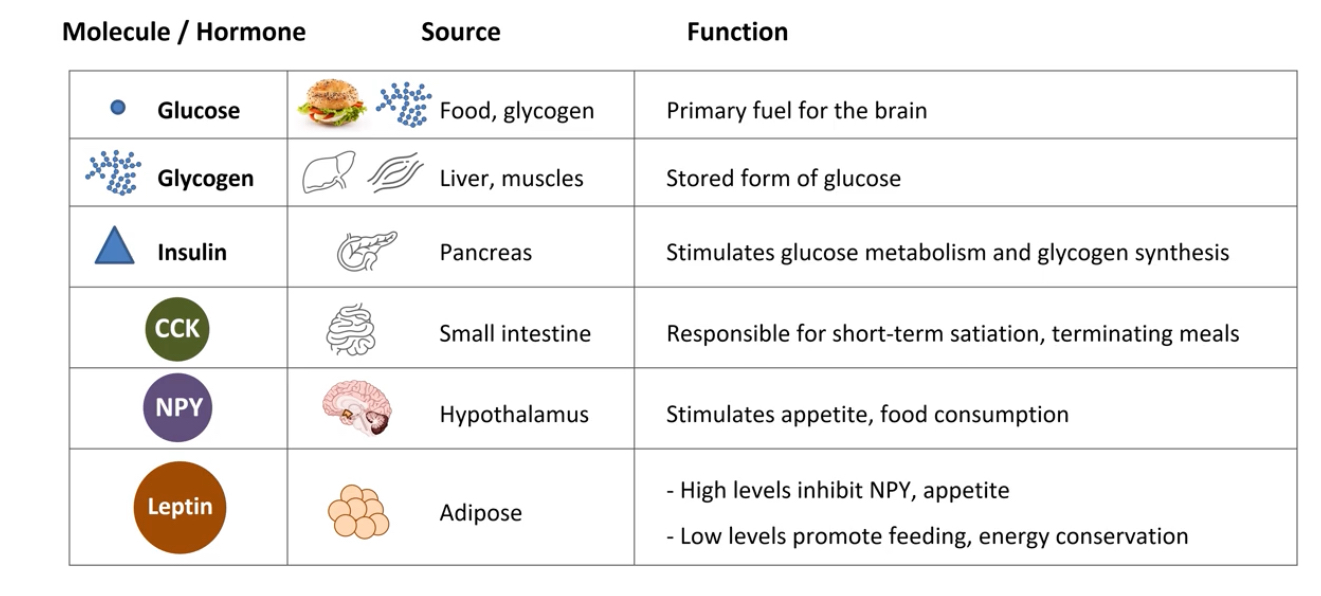
Glycogen
How glucose is stored so the brain can release it in between meals to keep a constant supply of energy going
Where is glycogen mainly stored?
Liver and muscles
When does glycogen get converted back into glucose?
When blood glucose levels are low
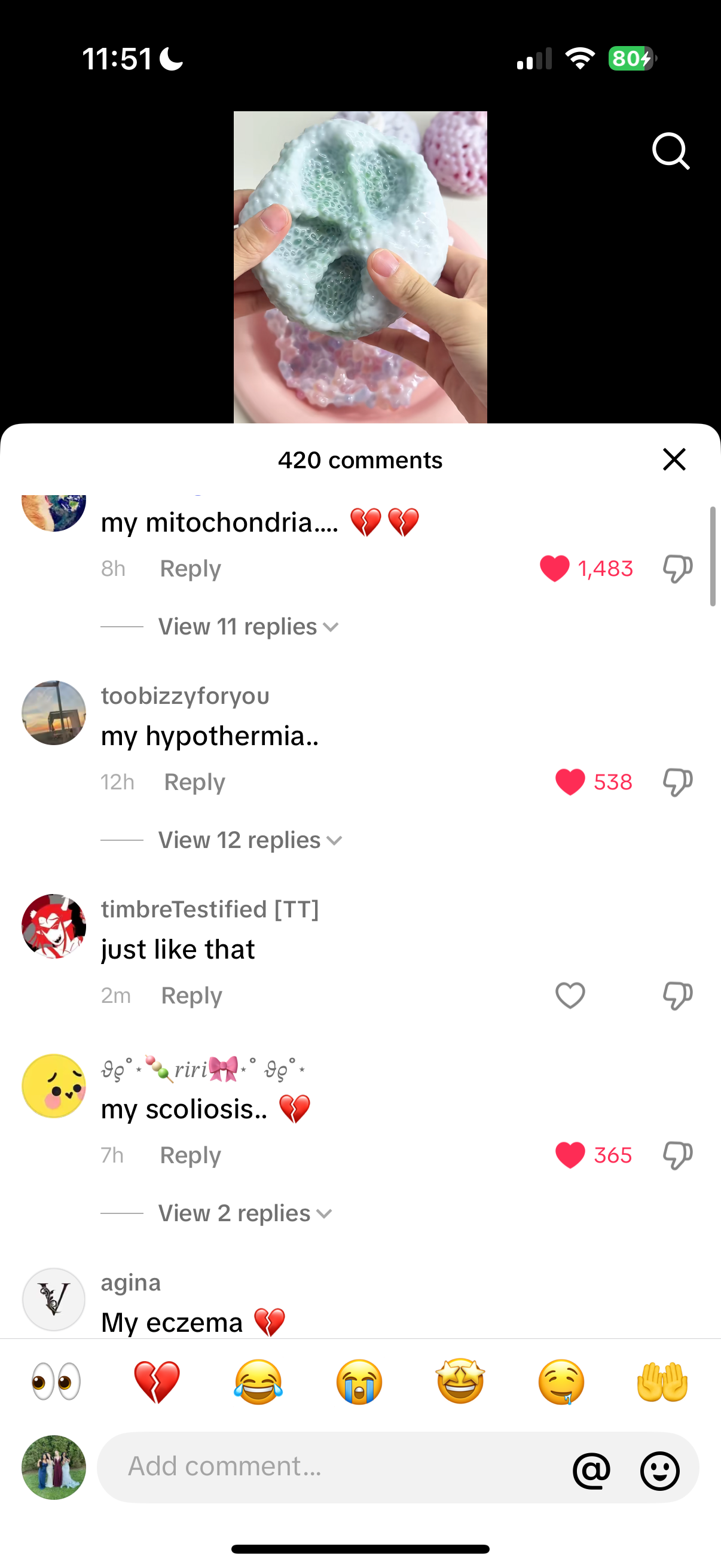
Insulin
Hormone in the pancreas that is secreted to promote the uptake of glucose for immediate use — mediates storage for excess glucose in its glycogen form
What happens when blood glucose levels get too low?
The liver begins to break down the stored glycogen into glucose, releasing it back into blood circulation

Neuropeptide Y (NPY)
Potential appetite stimulant; a hunger cue — high levels of this in the hypothalamus are associated with an increase in appetite
Stretch receptors
Activated in the stomach as it fills with water or food which signals the brain directly through the vagus nerve that connects the gut with the brain stem, signalling satiation
Digestive hormones
Secreted by the gastrointestinal tract that sends signals to the brain for satiation

Cholecystokinin (CCK)
A hormone produced by the small intestine that triggers short-term satiety
Adipose tissue
Endocrine organ; a form of fat where long-term energy storage takes place
Why would excess energy be stored in fat if glycogen is a quicker transference source of energy?
Fat has more than twice the energy density and fat is found all over the body
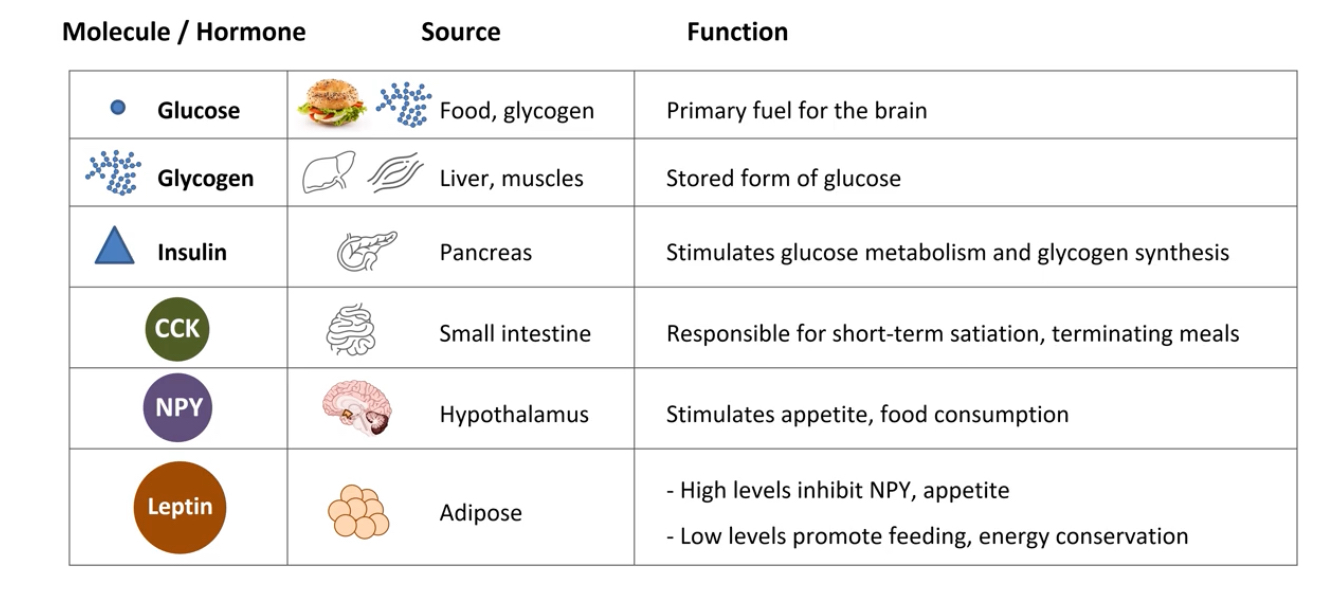
Leptin
Hormone secreted by adipose tissue that act on receptors in the hypothalamus, when high enough to reduce appetite, maintaining long-term energy storage
OB gene
Controls leptin production
Leptin resistance
Beyond certain level of body fat, effect of leptin on appetite is reduced; obese people with already normal leptin levels won’t be affected if given more leptin
Leptin in human history
High levels would be rare since calories were a limited resource
Endogenous opioids
Naturally occurring chemical substances that have morphine-like analgesic (pain-killing) actions on the body — contributes to palatability (tastiness) and reward-driven feeding
Blocking endogenous opioids
Using naloxone, this would reduce intake of rewarding foods, i.e. sugar
Universal taste preferences
Shaped by cultural influences which in turn are shaped by local food availability
Sweet
Energy-rich, i.e. fruits
Salt
Electrolytes — needed for action potentials (Na)
Sour & Bitter
Warning of harmful or spoiled or poisonous foods
Umami
Detects amino acids glutamate and aspartate
Gustatory cortex
Holds specific neurons that respond to each taste; connects to many other areas, helping combine taste with other information

Gustatory cortex to primary somatosensory
Combines taste with texture
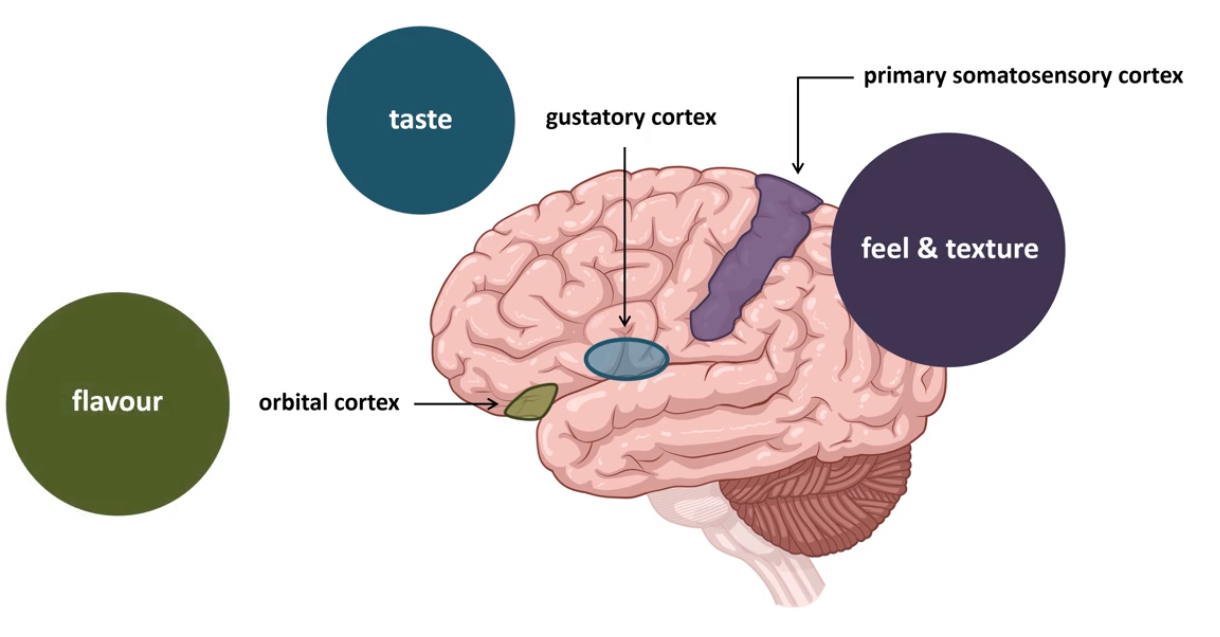
Gustatory cortex to orbital cortex
Combines taste with smell
Retronasal smell
The process that allows for the ability to sense flavour due to the interaction between taste and smell that occurs in the nasopharynx at the back of the throat
How is smell processed in the brain?
Olfactory receptor cells activate unique patterns of firing across multiple receptors, thereby responding to a range of stimuli — unique in that it has a direct link to the cortex
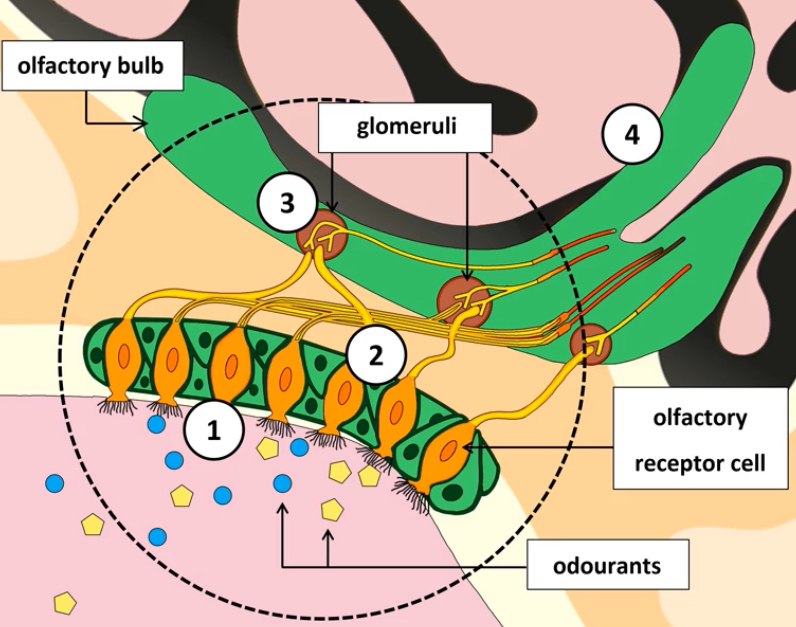
Odourants getting processed into neuronal signals — step 1
Odourant binds to olfactory receptors
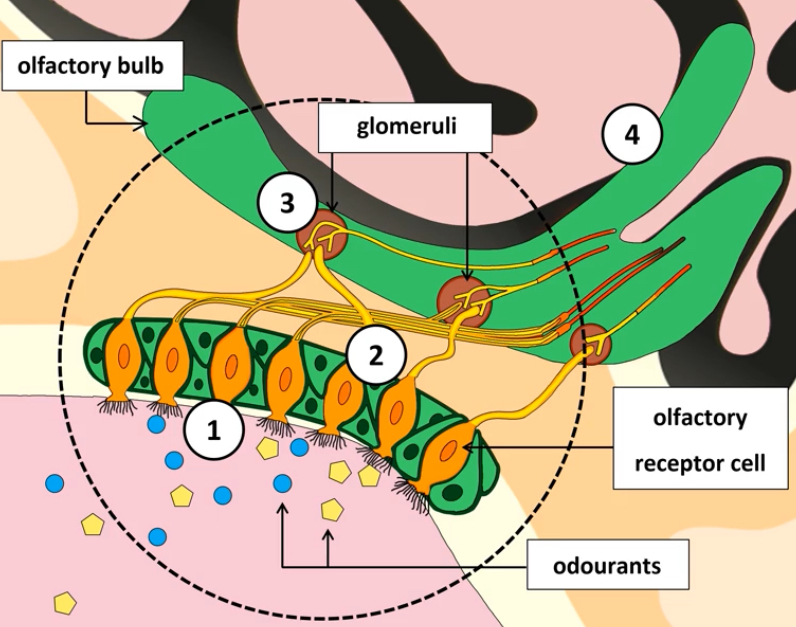
Odourants getting processed into neuronal signals — step 2
Receptors fire action potentials which travel down the receptors’ axons to the olfactory bulb

Odourants getting processed into neuronal signals — step 3
Axons synapse with dendrites of glomeruli cells that receive the input from thousands of olfactory receptors
Odourants getting processed into neuronal signals — step 4
Glomeruli send action potentials along their axons to higher brain regions
Ghrelin
A hormone produced by cells lining the stomach that stimulates hunger